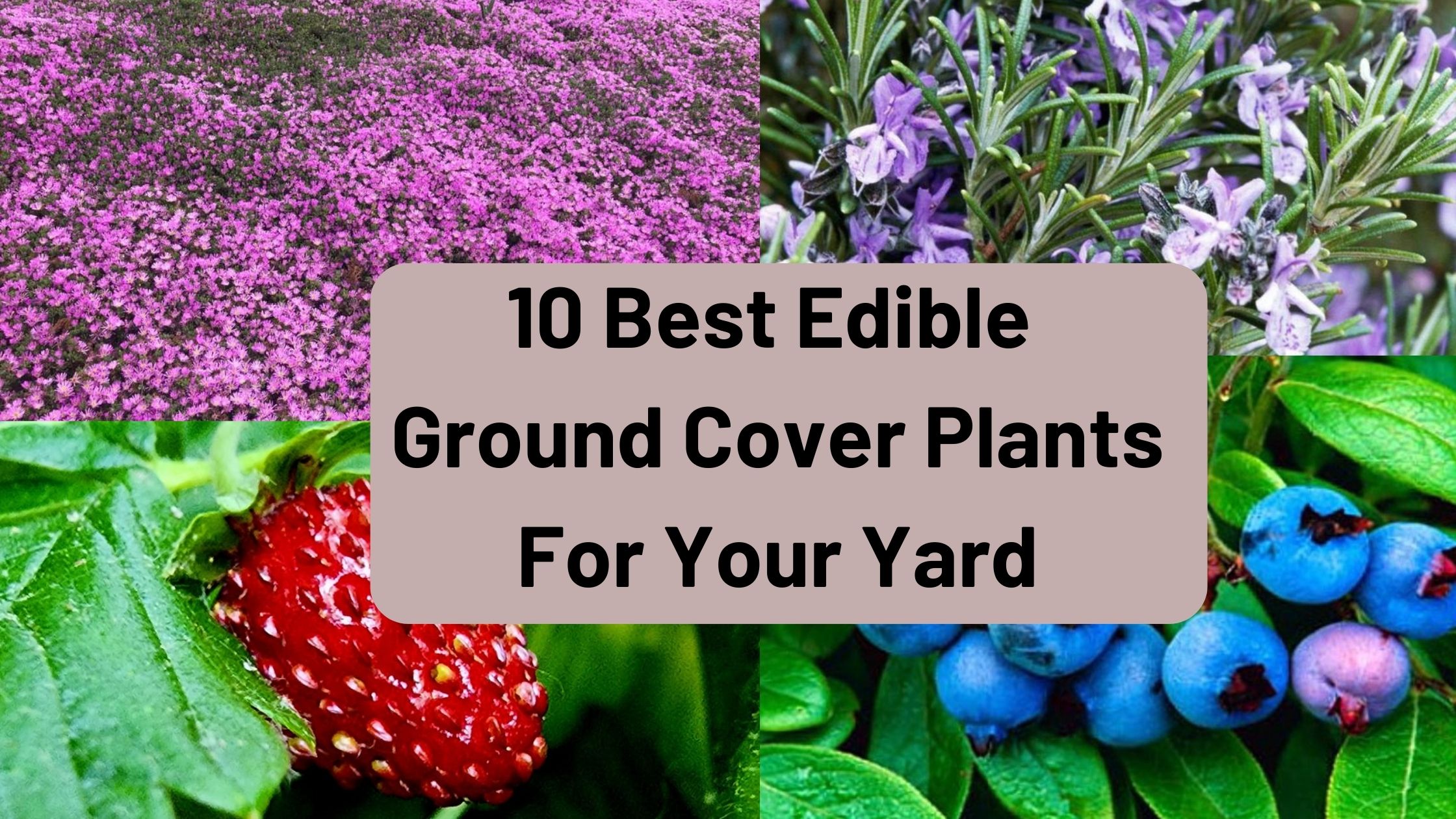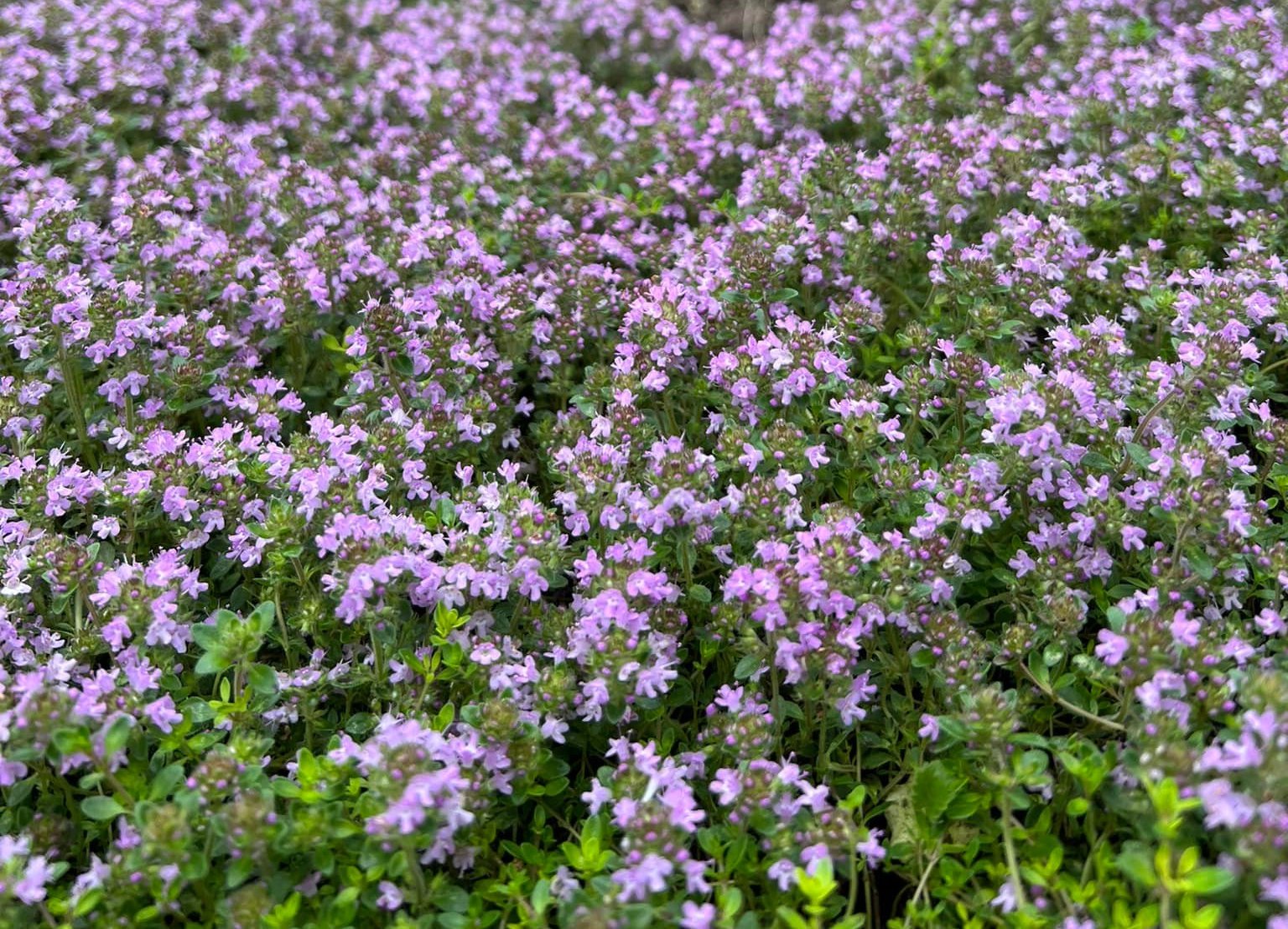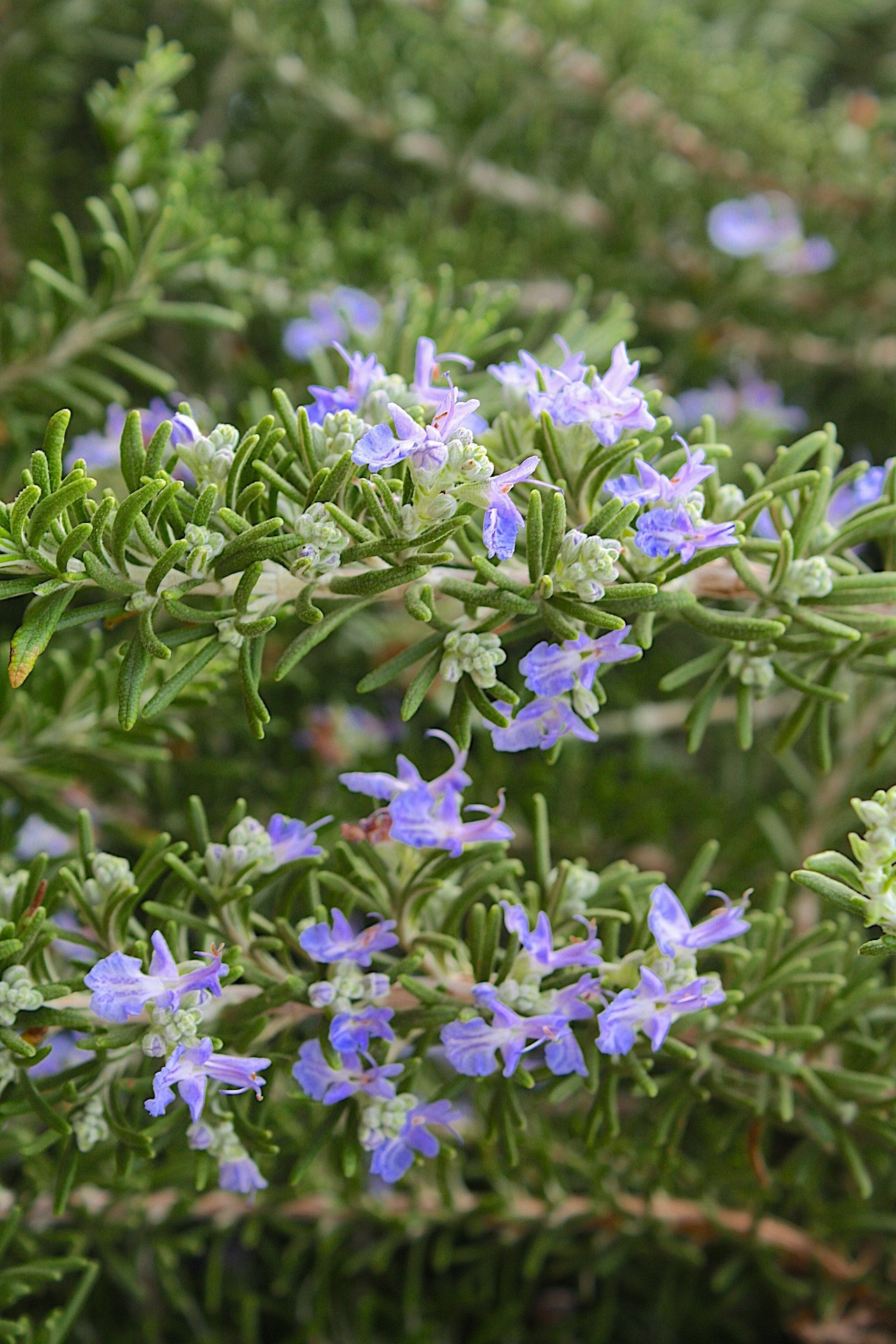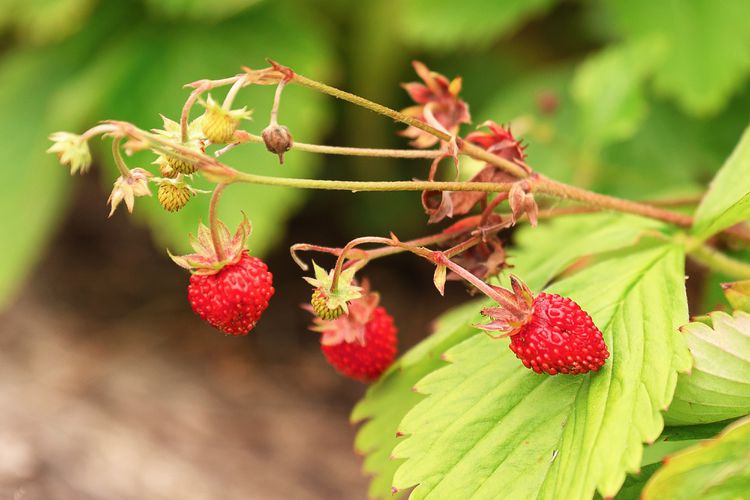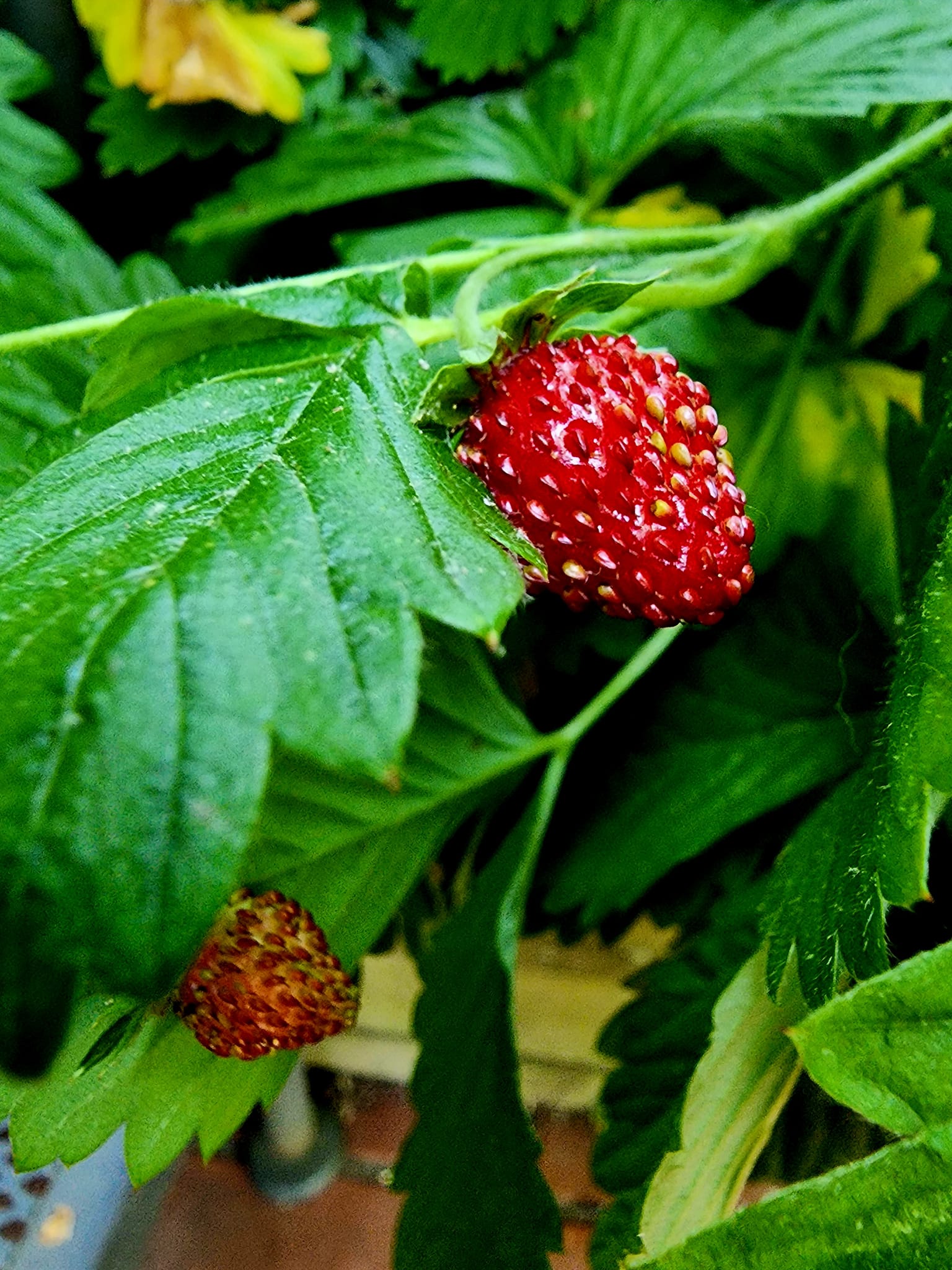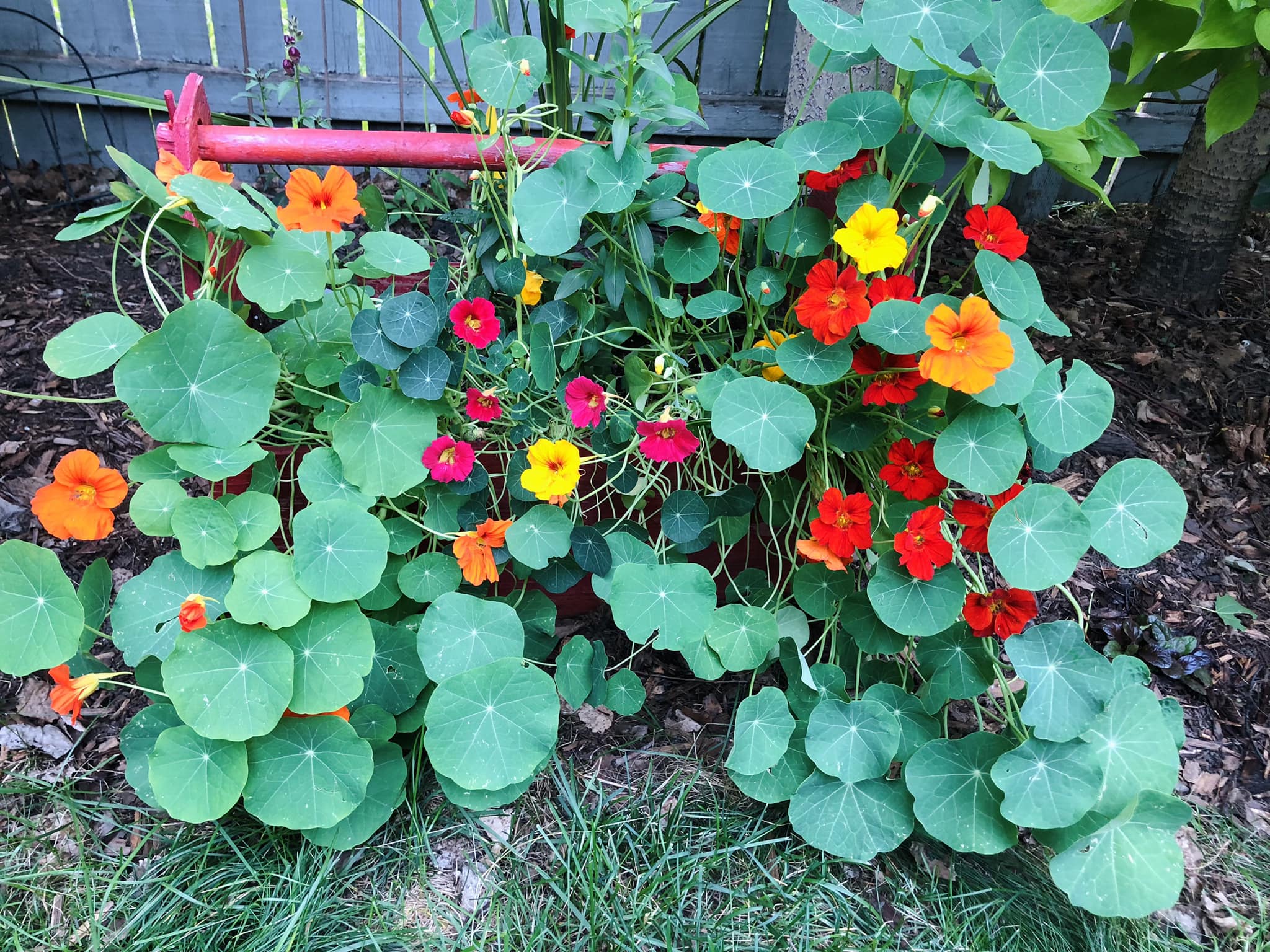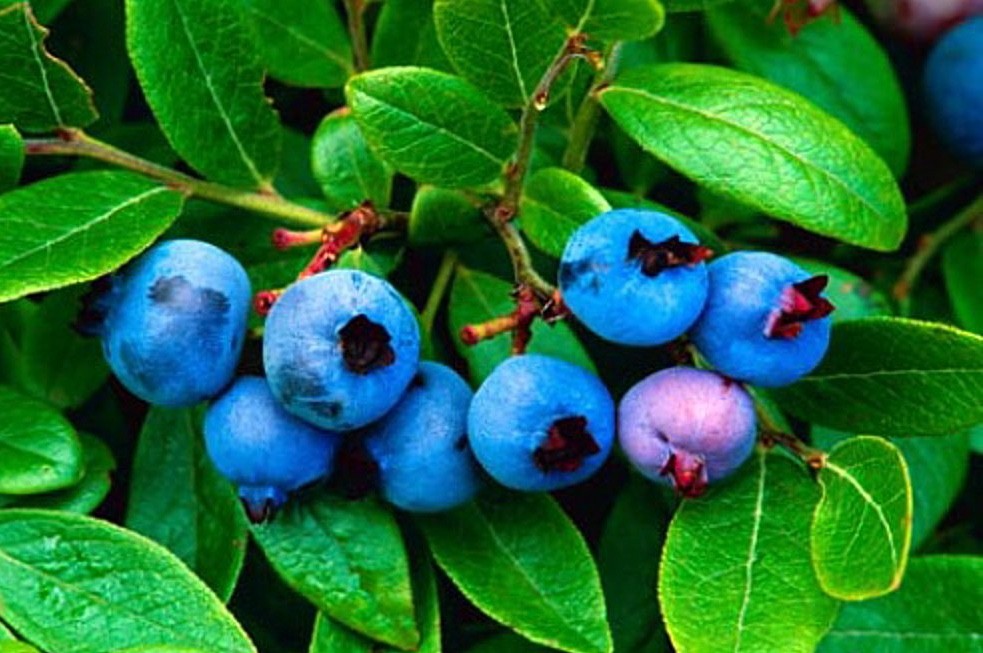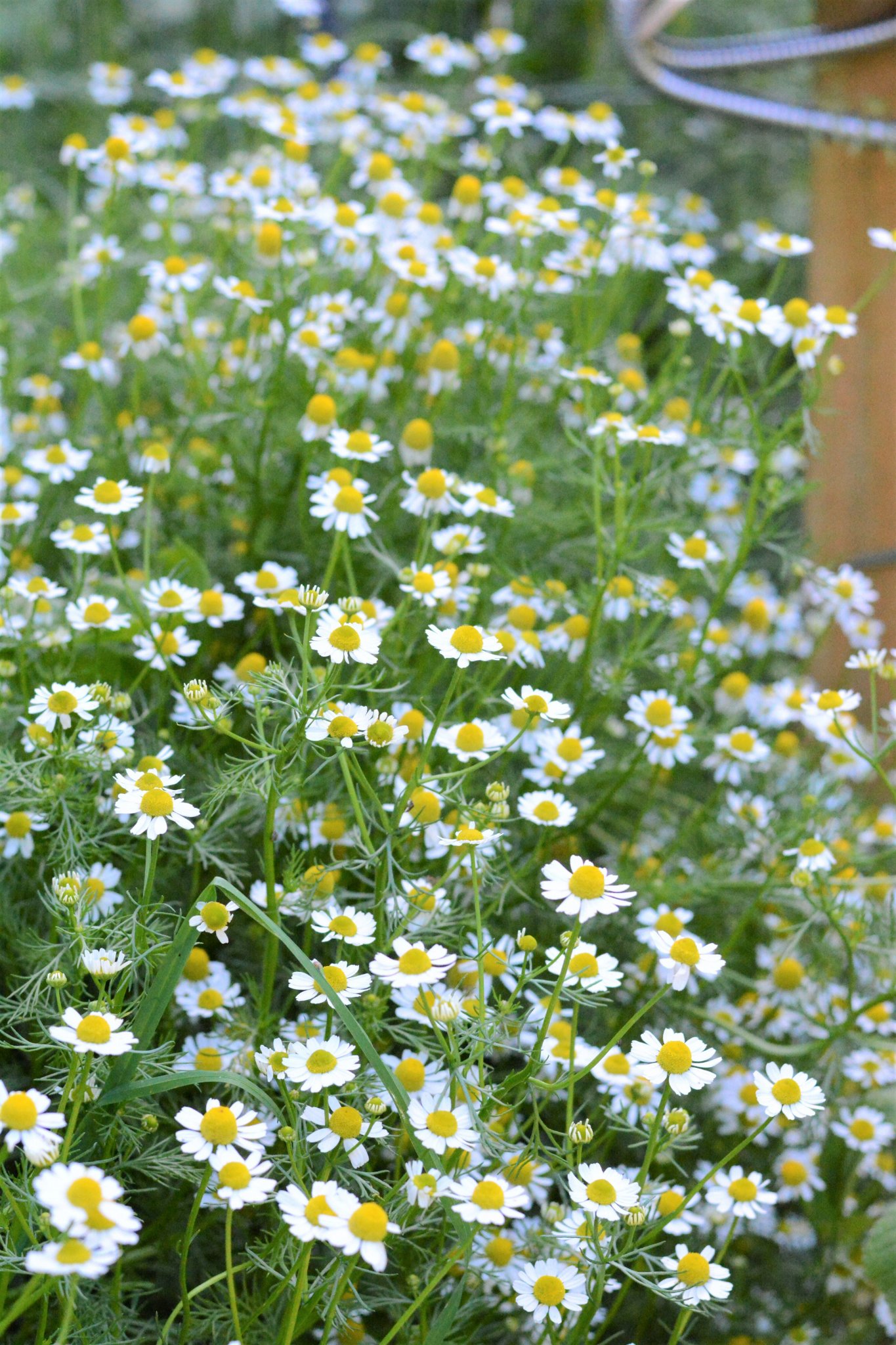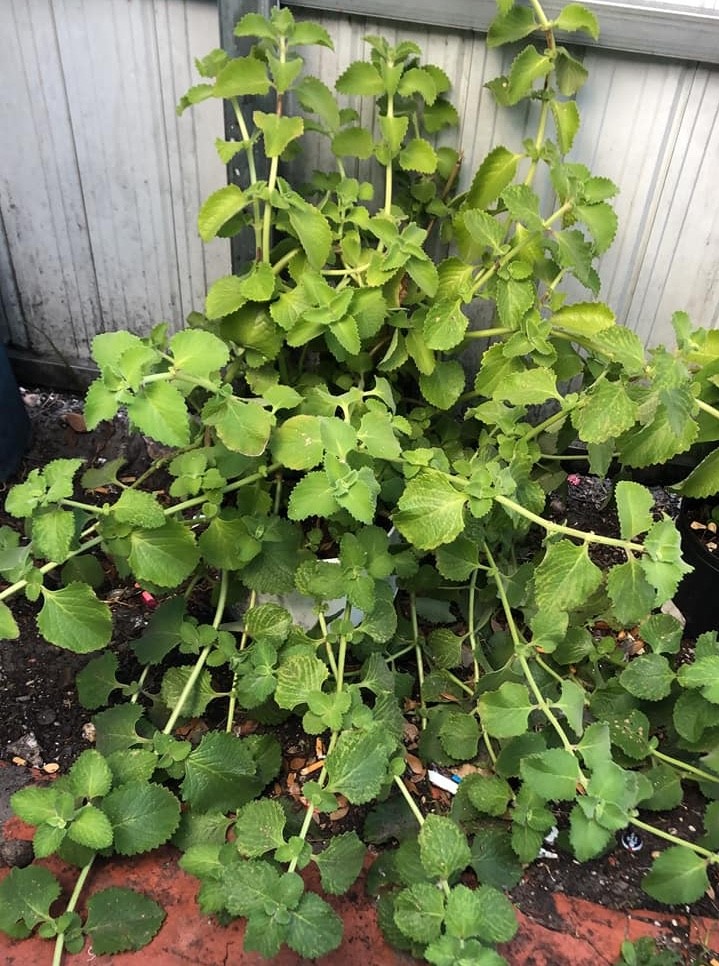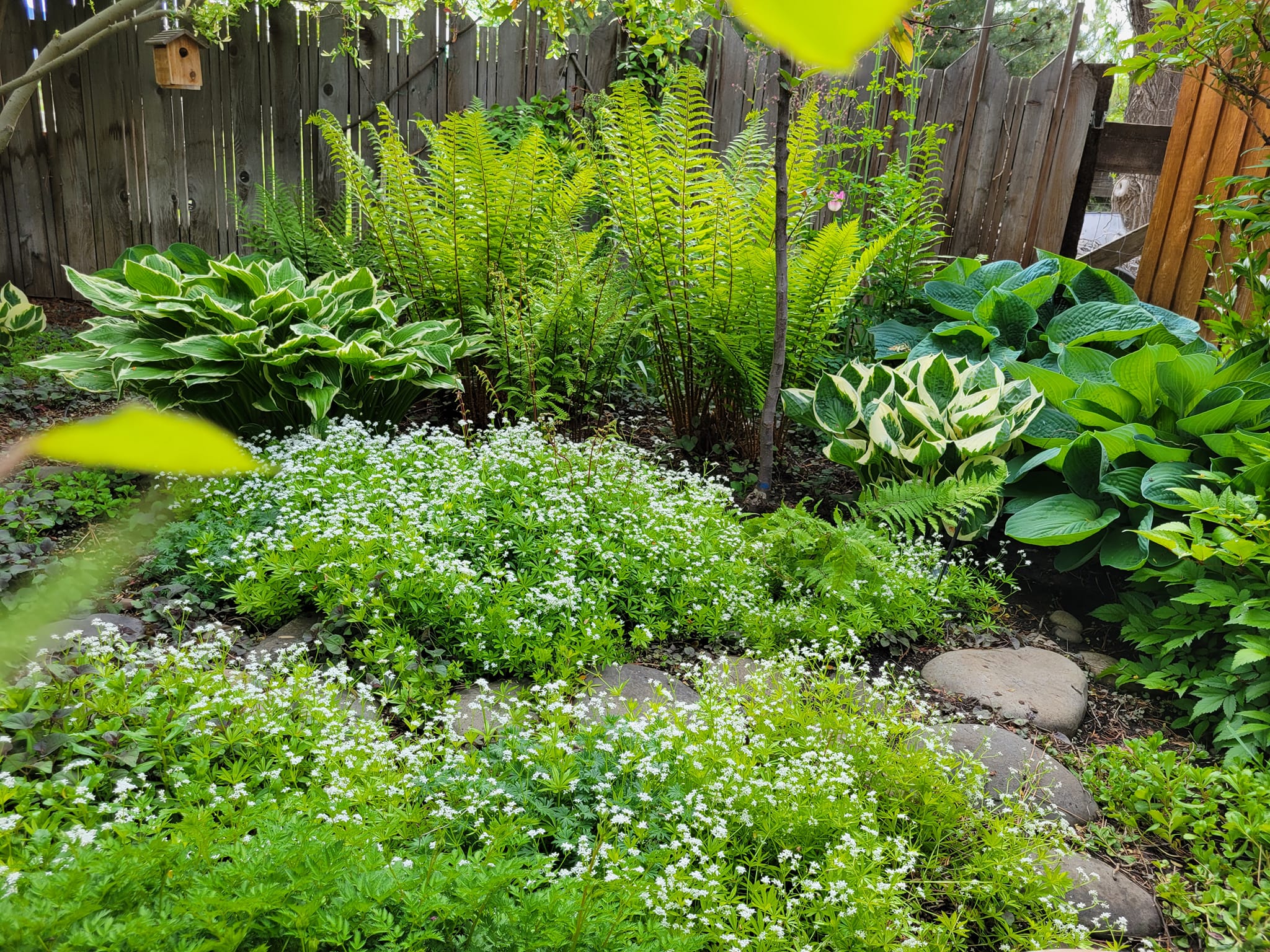Why grow a plant for a single purpose when there are many plants with numerous benefits? Edible ground covers beautify your yard with their dense mat, suppress weeds, prevent soil erosion, and provide you with a source of food.
So, when looking to transform your yard into a productive and beautiful space, consider edible ground cover plants, as they offer a unique and practical solution. Edible ground covers bring a delightful fusion of flavor and functionality to your outdoor space.
In that case, let’s look at the best edible ground cover plants to help make your yard a tasteful and sustainable space.
10 Best Edible Ground Cover Plants For Your Yard
1. Creeping Thyme (Thymus serpyllum)
You can incorporate creeping thyme in your cooking, especially when preparing Mediterranean dishes. It will give your food a subtle, earthy flavor. However, do not over-harvest the leaves to ensure the plant thrives and provide ample ground cover.
Regarding ground cover, the creeping thyme will form a dense carpet of small green leaves and tiny pink or purple flowers in late spring and early summer for a visually appealing and colorful landscape.
Walk or brush against this plant, and it will produce a therapeutic scent. This drought-tolerant plant will suit your yard’s rocky or dry areas and is highly suitable for xeriscaping. Consider it, especially if you want a low-maintenance cover and a more natural look.
Since it thrives in sunny areas, it is ideal for your yard’s well-drained areas like pathways and rock gardens.
Hardiness zones: 4-9
Related Posts:
- 12 Cheap No Grass Backyard Ideas
- Cheap Ways To Cover Dirt In Backyard
- Creeping Thyme Lawn
- 10 Cheap Alternatives to Grass Lawn
2. Creeping Rosemary (Rosmarinus officinalis’ Prostratus’)
Creeping rosemary’s dense mat-forming dark green, needle-like leaves remain evergreen in mild climates, so if you live in such areas, your yard will look pleasant all year round. The small blue to violet flowers will also make your home stunning.
Appearance aside, this ground cover is a popular herb in Mediterranean cuisine. You can use its fragrant leaves for cooking, seasoning roasted meats, vegetables, and more.
Like the creeping thyme, the creeping rosemary produces a delightful fragrance that will enhance the sensory experience of your garden if you walk or brush against it. Due to its trailing, spreading habit, you can use this plant to control soil erosion on slopes or hilly areas in your yard.
Go for it if you want a mat-forming, beautiful, low-maintenance, drought-tolerant ground cover that does well in poor soil conditions.
Hardiness zones: 7-11
3. Wild Strawberry (Fragaria vesca)
Instead of visiting the market whenever you want some sweet, flavorful strawberries, why not create a steady supply of these delightful fruits in your home? Plant wild strawberries, and you will have fresh strawberries for snacking or making jams and desserts.
Moreover, the wild strawberry plants create an attractive ground cover featuring green foliage with white, five-petaled flowers. This relatively low-maintenance hardy perennial can adapt to different soil conditions.
Wild strawberries will also make your garden biodiverse as the berries attract birds and other wildlife. You can grow this fragrant-emitting ground cover in partial shade.
This plant will come back annually, ensuring you a dependable ground cover and a supply of berries. When planting this ground cover, space it appropriately since it can spread quickly.
Hardiness zones: 5-9
4. Alpine Strawberries (Fragaria vesca’ Alpina’)
Alpine strawberries may be smaller than the common ground strawberries, but these red or yellow berries are known for their intense, sweet flavor and aromatic fragrance. You can savor these berries fresh or in pies, jams, desserts, or salads.
These plants grow low to the ground and form a dense, spreading mat of leaves, making them great ground covers and edge plants. Apart from covering the soil in your yard, alpine strawberries’ green foliage with dainty white flowers are aesthetically pleasing, functional, and ornamental.
Consider it for your yard’s partially shaded spaces. It will also do well in small areas or borders due to its compact growth habit. Wild strawberries will also help enhance your yard’s sensory experience because the leaves emit a pleasant fragrance if you crush or walk on them.
Hardiness zones: 3-10
Read More: Flowering Ground Covers For Shade
5. Mint (Mentha spp.)
Mint goes well with various dishes, from salads and desserts to beverages like tea and cocktails, so you can greatly benefit from planting this fast-growing plant in your yard. Choose a mint variety (peppermint, spearmint, and chocolate mint) that suits your culinary preferences.
Since this hardy, low-maintenance plant grows fast, you will have a sufficient ground cover in no time. A mint ground cover will help you suppress weeds and create an attractive, lush carpet of greenery.
Besides looking aesthetically appealing, your yard will smell heavenly since mint releases a delightful, refreshing aroma when touched or crushed.
Keep mint from spreading aggressively by planting it in containers or controlling its growth with barriers.
Hardiness zones: 3-11
6. Nasturtium (Tropaeolum majus)
Use nasturtium’s vibrant flowers as garnish and the peppery-tasting leaves to add a unique, spicy flavor to salads and dishes. With the ability to produce abundant blooms throughout the growing season, you will have plenty of flowers for garnishing and a colorful and lively ground cover.
The colorful, trumpet-shaped flowers in various shades, including red, orange, and yellow, are not only beautiful but also vibrant. That’s not all; nasturtium helps suppress weed growth, cover bare patches of soil, and serve as a living mulch because it spreads and trails.
You can grow it in different parts of your yard because it can flourish in sunny and partially shaded areas. If you let nasturtium drop its seeds, it can self-seed, returning year after year. Nasturtiums prefer growing in well-draining soil with moderate moisture.
Hardiness zones: 9-11
7. Groundcover Blueberry (Vaccinium spp.)
Groundcover blueberries offer aesthetic and edible benefits, making them a dual-purpose addition to your yard. First, they create a ground cover that works well in various landscaping settings, such as edible gardens, along borders, or on slopes.
This plant’s trailing growth helps control erosion, stabilize the soil, and reduce weed growth. Secondly, this plant’s evergreen foliage, with delicate white or pink flowers in the spring, adds visual appeal to your yard.
Thirdly, you can harvest the tiny, sweet, and flavorful blueberries for eating fresh, making jams, or baking into pies and muffins. As for growing conditions, grow this partial-shade tolerant plant in acidic, well-drained soil.
Keep your groundcover berries ground cover tidy and productive by pruning.
Hardiness zones: 3-7
8. Chamomile (Matricaria chamomilla)
Achieve a calming and soothing effect with delicious, aromatic herbal tea derived from chamomile flowers. The tea will help with indigestion, reduce stress, and boost sleep quality. Chamomile is a traditional medicine with antioxidant, anti-inflammatory, and antimicrobial properties.
The daisy-like white fragrant flowers with a sweet, apple-like scent create a carpet of white blossoms. Apart from forming a ground cover with chamomile, you can use it as a companion plant to deter certain garden pests and improve the growth and flavor of neighboring plants.
It thrives whether you grow it in sunny or partially shaded areas. You can use fresh chamomile flowers or dry them for later use.
Hardiness zones: 2-9
9. Oregano (Origanum vulgare)
Do you wish to combine functionality and beauty into your yard? Consider growing oregano as ground cover. This popular herb with a robust and savory flavor will supply you with an essential ingredient for different dishes, especially Italian and Mediterranean dishes, such as pizzas, pasta sauces, and roasted vegetables.
Use oregano as ground cover if your yard sees some foot traffic because this hardy, low-maintenance herb can tolerate some trampling. As a bonus, your yard will smell pleasant if you brush or touch oregano’s fragrant leaves.
Oregano thrives in full sun, so grow it in your yard’s sunny areas, such as herb gardens, walkways, or borders. Planting chamomile in containers or controlling its growth with barriers helps keep it from spreading too aggressively.
Hardiness zones: 4-10
10. Sweet Woodruff (Galium odoratum)
This edible ground cover prefers growing in partially shaded to shaded locations, so make sure it receives the appropriate amount of shade. Moreover, keep it healthy by growing it in well-drained soil and give it the best chance to establish itself by planting it in the spring or fall.
Sweet woodruff is usually used to flavor various drinks like May wine (a German wine punch). In addition, you can dry the leaves and use them in tea. It is also a valuable traditional herbal medicine, especially for its mild sedative properties.
Aesthetically, this low-maintenance plant features whorled leaves and small, star-shaped white flowers that bloom in the spring. It forms a lush, green, dense carpet in your yard, with the leaves releasing a sweet, hay-like fragrance when dried or crushed.
Choose sweet woodruff for areas under trees, along paths, or in shaded garden beds where other plants may struggle to grow.
Hardiness zones: 4-8
Final Remarks
The best edible ground cover for your yard, like the vibrant strawberries, fragrant herbs, and resilient creeping thyme, bring a delightful fusion of flavor and functionality to your outdoor space.
However, to fully enjoy their benefits, base your selection on your location, garden conditions, culinary preferences, and the overall aesthetic you want to create. Furthermore, keep in mind that some ground cover, like mint, can be invasive.

Hey there, I’m Derek Schew, a writer for Lawnholic.com, where we cover everything and anything related to lawns. As someone who’s spent countless hours tending to my own lawn, I’m passionate about sharing my knowledge and helping others achieve the perfect yard. From lawn care tips to product reviews, I’m committed to providing our readers with the most accurate and up-to-date information available. So whether you’re a seasoned lawn enthusiast or just getting started, I invite you to join our community and discover the joys of a lush, green lawn.

